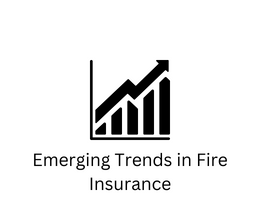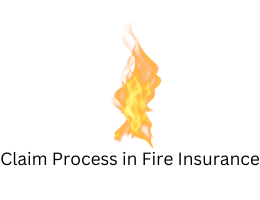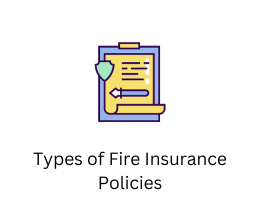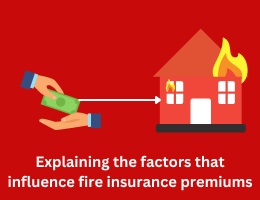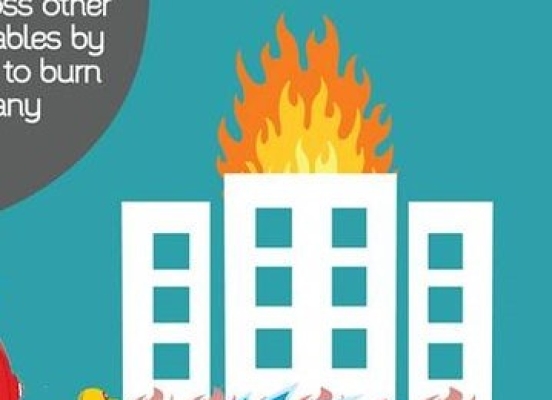
Understanding Fire Insurance
- By admin --
- Thursday, 28 Sep, 2023
Fire insurance is a crucial component of personal and property risk management. It provides financial protection against one of the most devastating and unpredictable disasters that can strike a home or business—fire. In this comprehensive guide, we will delve into the intricacies of fire insurance, covering what it is, how it works, the types of coverage available, factors affecting premiums, and much more.
I. What Is Fire Insurance?
Fire insurance is a type of property insurance designed to safeguard individuals and businesses from financial losses resulting from fires. It is an agreement between the policyholder (the insured) and an insurance company (the insurer) in which the insurer undertakes to compensate the insured for losses incurred due to fire-related damage or destruction of property. These losses may include damage to the insured's dwelling, personal belongings, and even additional living expenses in case the property becomes uninhabitable due to fire damage.
II. The Importance of Fire Insurance
-
Financial Security: Fire insurance provides financial security to homeowners and business owners by covering the costs of repairing or rebuilding structures and replacing damaged or lost possessions. Without this coverage, the financial burden of recovering from a fire can be overwhelming.
-
Peace of Mind: Knowing that you have fire insurance can give you peace of mind. It means you have a safety net in place in case of the unexpected, reducing the stress and anxiety associated with fire-related risks.
-
Mortgage Requirement: Many mortgage lenders require borrowers to have fire insurance on their homes as a condition of the loan. This ensures that the lender's investment in the property is protected.
III. Types of Fire Insurance Policies
There are several types of fire insurance policies available to suit different needs and situations:
-
Basic Fire Insurance: This policy provides coverage against damage caused by fire, lightning, and sometimes, limited perils such as explosion or smoke damage.
-
Comprehensive Fire Insurance: Also known as all-risk or special perils coverage, this policy offers protection against a wider range of perils, including vandalism, theft, and damage caused by natural disasters like earthquakes.
-
Named Perils Policy: This policy specifies the exact perils or risks that are covered. It is more restrictive than comprehensive coverage but may be more affordable.
-
Actual Cash Value (ACV) vs. Replacement Cost Value (RCV): Policies can also differ in how they value lost or damaged items. ACV policies reimburse you for the current value of an item, accounting for depreciation, while RCV policies pay for the cost of replacing the item with a new one.
IV. What Does Fire Insurance Typically Cover?
Fire insurance policies typically cover the following:
-
Dwelling Coverage: This includes the main structure of your home or building, such as walls, roof, floors, and attached structures like garages.
-
Personal Property Coverage: Contents of your home or business, including furniture, appliances, clothing, and personal belongings.
-
Additional Living Expenses (ALE): If your property becomes uninhabitable due to fire damage, ALE coverage helps pay for temporary living expenses, such as hotel bills and dining costs.
-
Liability Protection: Some policies include liability coverage, which protects you if someone is injured on your property due to a fire, and you are found liable.
V. Common Fire Insurance Exclusions
While fire insurance provides valuable protection, it's essential to be aware of common exclusions, which are events or circumstances typically not covered by standard policies. These exclusions may vary by insurer, but they often include:
-
Arson: Fires intentionally set by the insured or someone acting on their behalf are typically not covered.
-
War and Terrorism: Damage caused by acts of war or terrorism may be excluded.
-
Natural Disasters: Some policies exclude damage from natural disasters like earthquakes and floods. Coverage for these events may require separate policies.
-
Vacancy Clause: If a property is vacant for an extended period, some policies may reduce or deny coverage.
-
Failure to Maintain: If the insured fails to maintain the property adequately, such as neglecting fire prevention measures, it could lead to coverage denial.
VI. The Fire Insurance Claims Process
In the unfortunate event of a fire, filing a fire insurance claim is the first step toward recovery. The claims process typically involves the following steps:
-
Notify Your Insurer: Contact your insurance company immediately to report the fire and initiate the claims process. Provide essential details, such as the date, time, and cause of the fire.
-
Document Damage: Document the extent of the damage with photographs or videos. Make a detailed inventory of damaged or lost items, including their value and purchase date.
-
Temporary Repairs: If necessary, take steps to prevent further damage, such as covering exposed areas or boarding up windows.
-
Meet with Adjuster: Your insurance company will assign an adjuster to assess the damage and determine the coverage. Cooperate fully during this process.
-
Claim Settlement: Once the adjuster approves the claim, your insurance company will provide funds to cover eligible losses. These funds can be used for repairs, replacements, or additional living expenses.
-
Rebuilding or Repairing: Use the insurance proceeds to repair or rebuild your property as necessary.
VII. Factors Affecting Fire Insurance Premiums
Several factors influence the cost of fire insurance premiums:
-
Location: Properties in areas with a higher risk of fire, such as those near forests or in wildfire-prone regions, may have higher premiums.
-
Building Materials: The type of materials used in construction can impact premiums. Fire-resistant materials may lead to lower costs.
-
Fire Protection Measures: Homes or businesses equipped with fire prevention and safety measures, like smoke detectors, fire extinguishers, and sprinkler systems, may receive discounts on premiums.
-
Claims History: A history of previous fire insurance claims can lead to higher premiums.
-
Coverage Limits: Higher coverage limits will result in higher premiums.
VIII. Fire Prevention and Mitigation
While fire insurance provides a safety net, it's essential to take proactive steps to prevent fires and reduce the risk of damage. Some fire prevention and mitigation measures include:
-
Smoke Alarms: Install smoke detectors in key areas of your property and test them regularly.
-
Fire Extinguishers: Keep fire extinguishers in easily accessible locations and learn how to use them.
-
Fire-Resistant Materials: Use fire-resistant building materials for construction and renovations.
-
Clear Vegetation: Maintain a defensible space around your property by trimming trees, removing dead vegetation, and creating firebreaks if you live in a wildfire-prone area.
-
Safe Storage: Store flammable materials, such as gasoline and propane, away from your home or business.
IX. Fire Insurance for Businesses
Businesses face unique risks when it comes to fire, including potential interruptions to operations and the loss of valuable assets. Business owners should consider the following when obtaining fire insurance:
-
Business Interruption Coverage: This coverage helps compensate for lost income and ongoing expenses during the time it takes to restore business operations after a fire.
-
Inventory and Equipment Coverage: Ensure your policy adequately covers inventory, equipment, and machinery.
-
Data Protection: Consider coverage for data loss and restoration, as fires can lead to the destruction of digital assets.
-
Legal Liability: Business insurance should include liability coverage in case a fire on your premises damages neighboring properties or injures individuals.
X. Choosing the Right Fire Insurance Provider
Selecting the right fire insurance provider is crucial to ensure you receive the coverage and support you need. Here are some tips to help you make an informed choice:
-
Research: Compare quotes and policies from multiple insurers to find the best coverage and rates.
-
Financial Stability: Check the financial stability and reputation of the insurance company by reviewing customer reviews and ratings.
-
Customer Service: Investigate the insurer's reputation for customer service, as you'll want a responsive and reliable company in case you need to file a claim.
-
Ask Questions: Don't hesitate to ask questions and seek clarification about policy terms, coverage limits, and any exclusions.
-
Customization: Look for an insurer that allows you to customize your policy to meet your specific needs.
In conclusion, fire insurance is a vital component of protecting your home or business from the devastating effects of fire-related disasters. Understanding the types of coverage available, the claims process, and factors affecting premiums will help you make informed decisions when choosing a policy. Additionally, taking proactive steps to prevent fires and mitigate risks is essential for safeguarding your property and loved ones. By carefully selecting a reputable insurance provider and tailoring your coverage to your needs, you can gain peace of mind knowing that you have a safety net in place in case of the unexpected—a safeguard that can prove invaluable in times of crisis.

